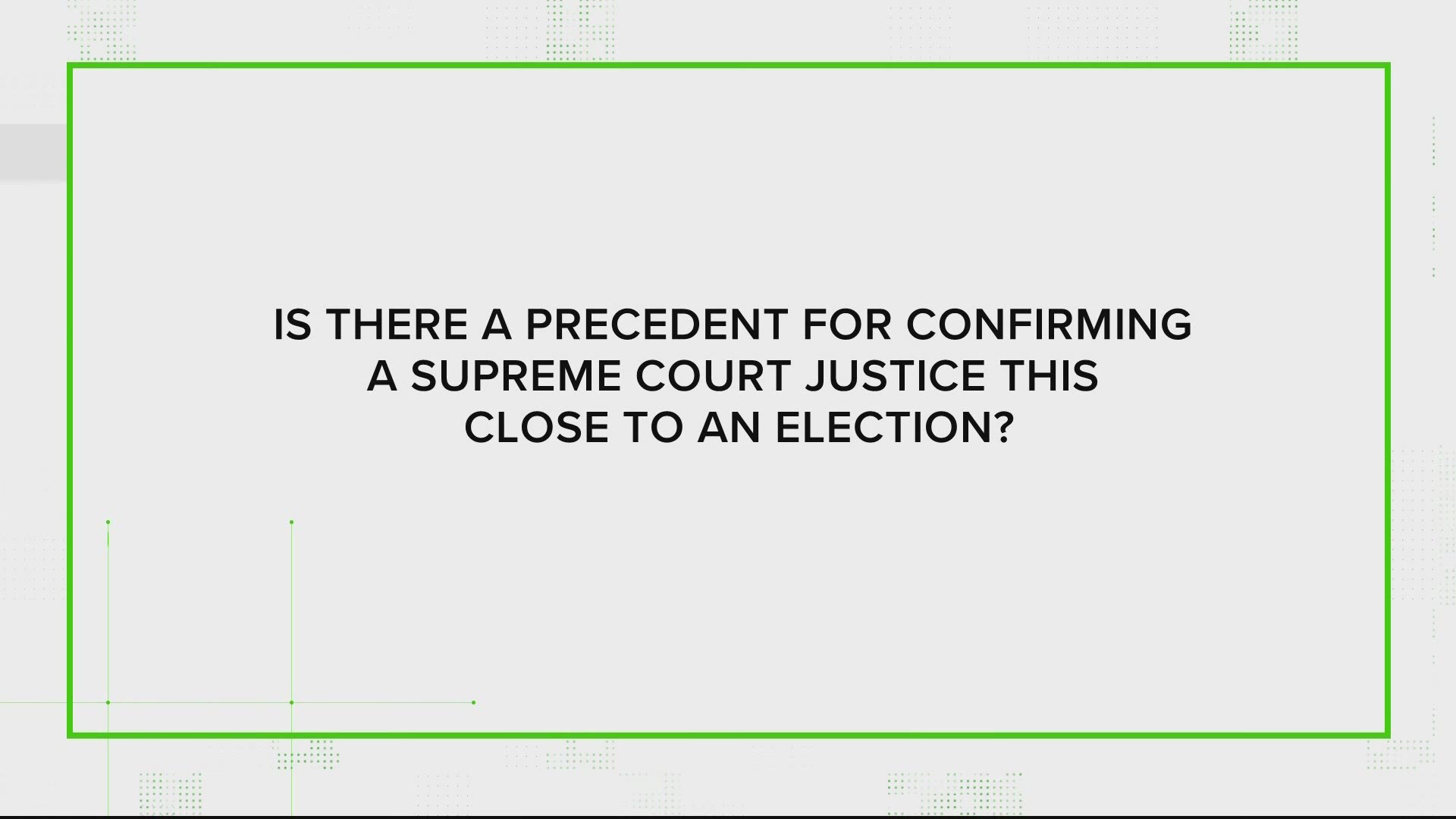WASHINGTON — There are a lot of questions on social media about what happens to Ruth Bader Ginsberg’s seat on the Supreme Court, following the news that the justice had died at the age of 87.
The Verify team took a look at what’s true and what’s false.
SOURCES
The Constitution
Kim Wehle, constitutional law expert
John Fortier, director of governmental studies at the Bipartisan Policy Center.
QUESTION
Can President Trump nominate a replacement before the end of his term?
Answer: Yes
According to Section 2 of the Constitution, only the president has the authority to appoint Supreme Court justices. Our sources tell us the Constitution does not have a timeline for nominating a new justice.
"An average Supreme Court nomination often takes about 70 days to get through committee to the floor," Fortier said. "And that certainly puts us late in the year, but there is enough time to get a Supreme Court nomination through in 2020."


QUESTION
Is it likely the Senate will confirm President Trump's nominee?
Answer: Yes
Senate Majority Leader Mitch McConnell released a statement shortly after the news of Ginsburg passing saying: “President Trump’s nominee will receive a vote on the floor of the United States Senate.”
"The Senate Majority Leader, pursuant to internal long-standing Senate rules, basically functions as a veto or as a pass-through," Wehle said.
QUESTION
Is there a precedent for confirming a Supreme Court justice this close to an election?
Answer: Yes
"Most recently, Republicans refused to confirm an Obama appointee after the death of Justice Scalia," Fortier said. "And there have been a couple of other cases like that later in the term. The difference being that the Senate was controlled, of course, by the opposite party.'

